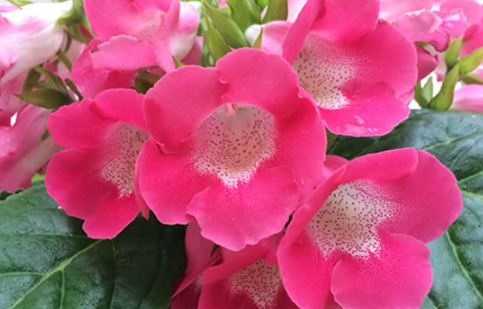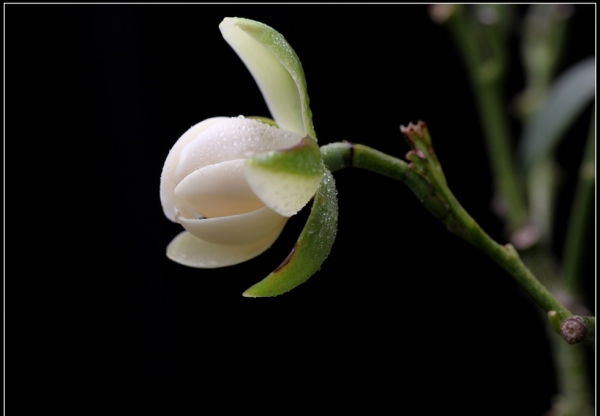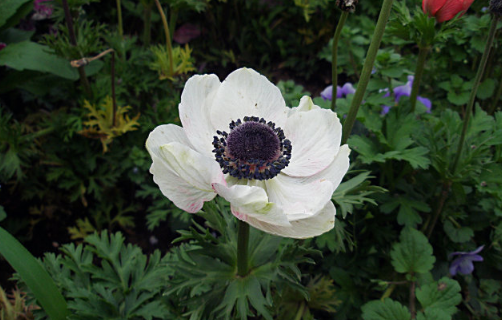What about the yellowing of paulownia leaves?
1. Too much watering
Reason: paulownia prefers to be moist, but it can't be watered too much. Too much watering will make the leaves yellow and rotten.
Solution: big paulownia should be watered less, do not dry, do not water, winter plants enter the dormant period, can stop watering. And can not be watered on the leaves, there are more villi on the leaves, watering will appear water stains, resulting in decay.

two。 Lack of light
Reason: paulownia likes a semi-shaded environment, but it can not be completely shaded. Long-term non-contact with the sun will make the leaves lose their luster and turn yellow.
Solution: usually put the big rock tree in a place where there is enough scattered light, can be protected on the windowsill, pay attention to avoid direct sunlight.
The above is the breeding method of paulownia, if the leaves turn yellow, we must find the right reason in order to help the plant restore health.
What about the yellowing of paulownia leaves?
The reason for the yellowing of the leaves of paulownia
Too much watering
The maintenance of paulownia requires high air humidity, but it does not mean that it needs more watering. Uneven watering and excessive watering will cause the leaves to yellowing and rot.
Too little light
Dayantong likes the semi-shaded environment, but it is not completely shaded, and the leaves will change color if they are not exposed to the sun for a long time.
Improper fertilization
When applying fertilizer, if you accidentally put fertilizer on the leaves, it will also cause the leaves to turn yellow and rot.
What about the yellowing of paulownia leaves?
Proper watering
Big paulownia should pay attention to less watering, do not dry do not water.
In winter, paulownia enters a dormant period and can stop watering.
Can not water the leaves, the leaves of paulownia grow fluff, watering will appear water stains, resulting in rot.
Absorb sufficient scattered light
Put the big rock tree in a place where scattered light can be absorbed, but to avoid direct sunlight, if it is the winter seedling stage, you should fully accept the sun.
Clean leaves after fertilization
After each fertilization, wash the leaves with clean water, then wipe off the water immediately so as not to cause the leaves to rot.
What about the yellowing and decay of the leaves of Tripterygium paniculata
Big paulownia, also known as snow mud. The plant is short in shape. Whether it is high or not. In the process of breeding, what should we do if we encounter the yellowing and decay of the leaves of paulownia? What is the flower language of Dayantong? Let's take a look at the answer.
What about the yellowing and rotten leaves of paulownia?
The reasons for the yellowing and decay of paulownia leaves: 1. Overwatering
Paulownia culture requires high humidity in the air, but does not like water. Uneven watering and excessive wetness of paulownia will cause leaves to yellowing and rot.
Solution: paulownia should pay attention to less watering, basin soil can not be watered, winter plants gradually enter dormancy to completely stop watering, in addition, can not water the leaves, in case of water stains, resulting in leaf rot.
The reasons for the yellowing and decay of the leaves of paulownia: 2. Too little light
Paulownia is a semi-negative plant, but it also needs sunlight, and its leaves will turn yellow and fall if it is not exposed to sunlight for a long time.
Solution: usually put the big paulownia in a place that avoids exposure to strong light but can provide enough astigmatism, and if it is the seedling stage in winter, you should accept sufficient sunlight to make the seedlings grow more healthily.
The reasons for the yellowing and decay of paulownia leaves: 3. Improper fertilization
Paulownia is very fat, but there are many velvety hairs on the leaves, which will cause the leaves to rot when fertilizing.
Solution: after each fertilization, spray water once to keep the leaf surface clean, but also pay attention to that there can be no water stains on the leaf surface.
The flower language of Dayantong:
The flower language represented by Da Yan Tong means "desire"; it represents the thriving spirit of pursuit and has an elegant and dignified temperament. Therefore, the flower language of Dayantong is: nobility, generosity, grace, blessing and desire.
More information
- Prev

The culture method of night flower
The night flower likes to grow in a warm, humid and sunny environment, but it is also necessary to provide proper shade on hot summer days. Soil night flower is suitable to be planted in well-drained, fertile and slightly acidic sandy soil, avoiding calcareous soil but also resistant to barren soil and arid climate. Fertilizing night flowers like fertilizer
- Next

Culture skills of anemone
Before planting anemone, soak the root with water for 1-2 days to make the anemone seed absorb water and expand. 3 parts of garden soil, 1 part of rotten leaf soil and 1 part of rice chaff ash, 1 handful of rotten compost or chicken manure in each pot. 3-5 balls can be planted in a basin with a diameter of 20 cm. When planting, the tip of the root should be downward, not upside down.
Related
- Fuxing push coffee new agricultural production and marketing class: lack of small-scale processing plants
- Jujube rice field leisure farm deep ploughing Yilan for five years to create a space for organic food and play
- Nongyu Farm-A trial of organic papaya for brave women with advanced technology
- Four points for attention in the prevention and control of diseases and insect pests of edible fungi
- How to add nutrient solution to Edible Fungi
- Is there any good way to control edible fungus mites?
- Open Inoculation Technology of Edible Fungi
- Is there any clever way to use fertilizer for edible fungus in winter?
- What agents are used to kill the pathogens of edible fungi in the mushroom shed?
- Rapid drying of Edible Fungi

